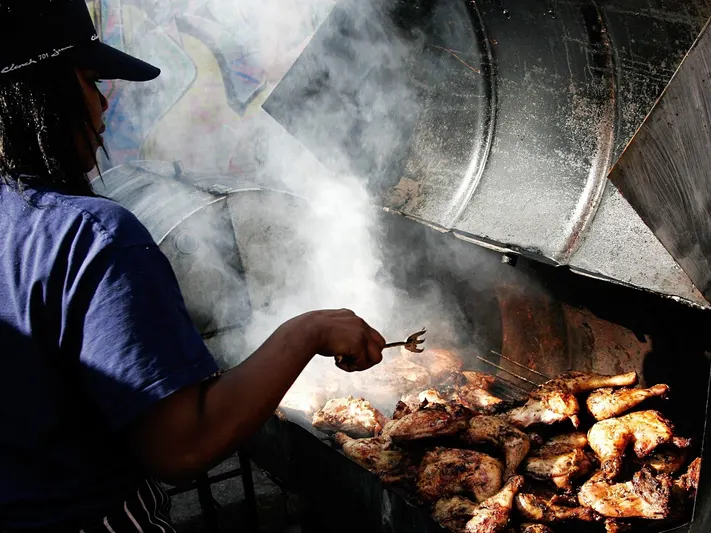Jamaican food and culture is reflective of the array of nations who have settled on the island over centuries. Native Amerindian, West African, British, Dutch, French, Spanish, East Indian, Portuguese, and Chinese communities have all contributed to Jamaica over the last 2,500 years, curating the culture we know and love today.
The island was originally named Xamayca (meaning Taino Land of Wood and Water or Land of Springs) by the Tainos – a native amerindian tribe from South America who inhabited the island as early as 800AD.
Following the arrival of the Spanish in 1494, the entire Taino population was enslaved and reduced to less than 85% through the spread of diseases and intense labour. The Spanish and other European nations required a new workforce, descending on the West coast of Africa to fulfil their need. Innocent families were traded from Ghana, Sierra Leone and Guinea and shipped across the Atlantic.

For those that made the middle passage to work on the sugar cane and cotton fields, brutal treatment on plantations became intolerable. Over time, numerous uprisings occurred by those who refused to accept the inhumane subjugation of plantation life. In 1655, the British took a hold of the island from Spain and many used this opportunity to escape. Those who managed to evade capture, fled to the mountainous areas of the island.
Limited food supplies in the mountains meant survival was challenging. Roaming wild boar became their primary food source, which began the origins of jerk. They seasoned them with salt and wild herbs, then dug holes in the ground filled with wood and buried the meat in pits. They covered these roasting pits to hide any smoke emitted that could attract attention.
For jerk to be cooked authentically, it must be cooked on pimento wood, giving the meat a smoked and spicy aroma when grilled. As the cooking of jerk has evolved, nowadays, the meat is marinated first with dry spices or a paste made from pimento seeds, also known as allspice (early Europeans mistook the pimento berries for black pepper and named them pimento, which is the Spanish word for pepper), scotch bonnet peppers, onions, garlic, thyme and a few other ingredients.

